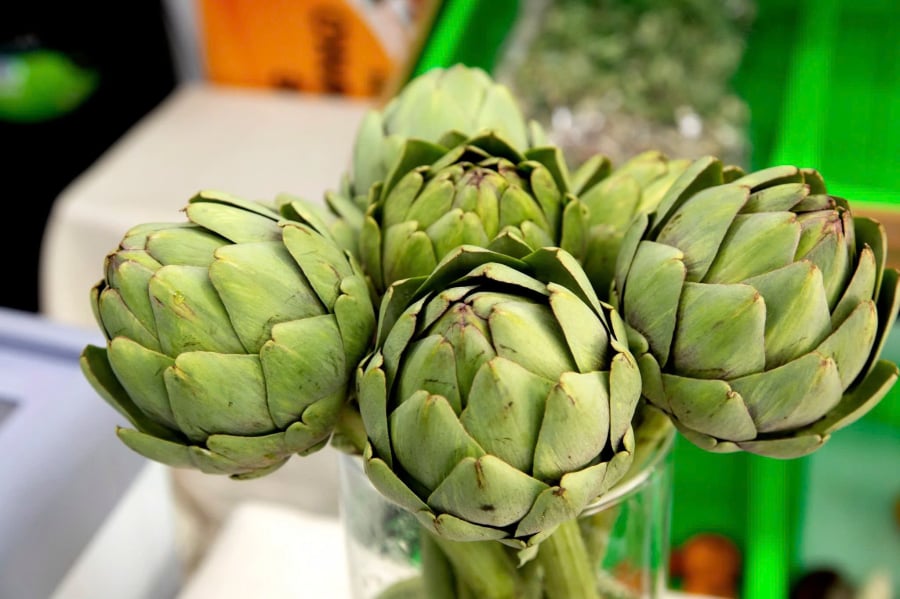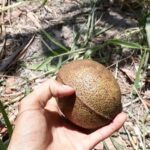Fiber is instrumental in supporting digestion, preventing constipation, and reducing the risk of cardiovascular disease. According to the Academy of Nutrition and Dietetics, women should aim for approximately 25 grams of fiber daily, while men require up to 38 grams.
However, not all vegetables provide the same abundant fiber content. According to a list published by Eating Well, a familiar flower in Vietnam tops the chart of fiber-rich vegetables – artichoke.
Artichoke – The “Fiber King” in the Vegetable Kingdom

A medium-sized artichoke can offer up to 7 grams of fiber, twice as much as a whole potato with skin (3.63 grams), and five times more than a carrot (1.4 grams). With this impressive fiber content, artichoke is the ideal choice for boosting daily fiber intake.
Beth Czerwony, a nutritionist at Cleveland Clinic, states, “Artichokes are not only delicious but also highly beneficial for our health. They should be a regular part of family meals.”
The Amazing Health Benefits of Artichoke
1. Digestive Support and Constipation Prevention
The fiber in artichokes feeds beneficial gut bacteria, promoting digestion and reducing issues like bloating, indigestion, and constipation.
2. Liver Protection and Cholesterol Reduction
Artichokes contain silymarin, a rare antioxidant that protects liver cells from damage and supports the treatment of liver conditions like cirrhosis and fatty liver. Additionally, cynarin, a natural compound in artichokes, helps lower blood cholesterol and reduces the risk of cardiovascular disease.

3. Cancer Prevention and Anti-Inflammatory Effects
According to research by the USDA, artichokes are among the vegetables with the highest antioxidant content. Notably, polyphenols in artichokes can inhibit cancer cell growth and effectively reduce inflammation.
4. Magnesium Boost – An Essential Mineral
Artichokes stand out not only for their fiber content but also for their magnesium richness, which helps regulate blood pressure, strengthen bones, and reduce muscle fatigue.
Artichoke Cultivation in Vietnam
Artichoke is not native to Vietnam but was introduced in the early 20th century. However, thanks to the country’s cool climate, this vegetable quickly adapted and became a prominent medicinal crop in the northern mountainous regions and the Central Highlands.
Prominent artichoke-growing regions in Vietnam include:
Dalat (Lam Dong): The largest artichoke-growing area in the country, with approximately 162 hectares of cultivation (as of 2023), yielding up to 8,200 tons annually. Dalat artichokes are renowned for their large size and refreshing taste.
Sa Pa (Lao Cai): During the 2023-2024 crop year, Sa Pa produced 1,920 tons of artichokes, generating over VND 5 billion in revenue and improving the livelihoods of local residents.
Tam Dao (Vinh Phuc) and Quan Ba (Ha Giang): These regions offer a temperate climate ideal for year-round artichoke cultivation.

Fresh artichoke flowers are commonly sold in traditional markets, agricultural produce stores, and e-commerce platforms in Vietnam. Prices range from VND 120,000 to 200,000 per kilogram, depending on the variety and season.
In addition to the flowers, other parts of the artichoke plant, such as the stems, roots, and leaves, are also utilized for producing artichoke tea, liver supplements, and functional foods.
Artichoke is not just the world’s richest vegetable in fiber but also a “superfood” for liver protection, immune support, and cardiovascular health. With its abundant domestic production, Vietnamese consumers can easily incorporate this nutritious vegetable into their daily meals to enhance the well-being of their families.



































